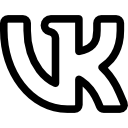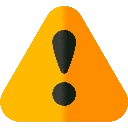the patients oxygen saturation. c. Examine the eye for evidence of trauma. d. Assess each of the cranial nerve functions. ANS: B The priority action for a patient after a head injury is to assess and maintain airway and breathing. Because the patient is complaining of shortness of breath, it is essential that the nurse assess the oxygen saturation. The other actions are also appropriate but are not the first action the nurse will take. DIF: Cognitive Level: Apply (application) OBJ: Special Questions: Prioritization TOP: Nursing Process: Implementation MSC: NCLEX: Physiological Integrity 42. Which prescribed medication should the nurse give first to a patient who has just been admitted to a hospital with acute angle-closure glaucoma? a. Morphine sulfate 4 mg IV b. Mannitol (Osmitrol) 100 mg IV c. Betaxolol (Betoptic) 1 drop in each eye d. Acetazolamide (Diamox) 250 mg orally ANS: B Test Bank - Lewis's Medical Surgical Nursing (11th Edition by Harding) 213 The most immediate concern for the patient is to lower intraocular pressure, which will occur most rapidly with IV administration of a hyperosmolar diuretic such as mannitol. The other medications are also appropriate for a patient with glaucoma but would not be the first medication administered. DIF: Cognitive Level: Apply (application) OBJ: Special Questions: Prioritization TOP: Nursing Process: Implementation MSC: NCLEX: Physiological Integrity 43. A 75-year-old patient who lives alone at home tells the nurse, I am afraid of losing my independence because my eyes dont work as well they used to. Which action should the nurse take first? a. Discuss the increased risk for falls that is associated with impaired vision. b. Explain that there are many ways to compensate for decreases in visual acuity. c. Suggest ways of improving the patients safety, such as using brighter lighting. d. Ask the patient more about what type of vision problems are being experienced. ANS: D The nurses initial action should be further assessment of the patients concerns and visual problems. The other actions may be appropriate, depending on what the nurse finds with further assessment. DIF: Cognitive Level: Apply (application) OBJ: Special Questions: Prioritization TOP: Nursing Process: Assessment MSC: NCLEX: Safe and Effective Care Environment 44. A patient who received a corneal transplant 2 weeks ago calls the ophthalmology clinic to report that his vision has not improved with the transplant. Which action should the nurse take? a. Suggest the patient arrange a ride to the clinic immediately. b. Ask about the presence of floaters in the patients visual field. c. Remind the patient it may take months to restore vision after transplant. d. Teach the patient to continue using prescribed pupil-dilating medications. ANS: C Vision may not be restored for up to a year after corneal transplant. Because the patient is not experiencing complications of the surgery, an emergency clinic visit is not needed. Because floaters are not associated with complications of corneal transplant, the nurse will not need to ask the patient about their presence. Corticosteroid drops, not mydriatic drops, are used after corneal transplant surgery. DIF: Cognitive Level: Apply (application) Test Bank - Lewis's Medical Surgical Nursing (11th Edition by Harding) 214 TOP: Nursing Process: Implementation MSC: NCLEX: Physiological Integrity 45. Which patient arriving at the urgent care center will the nurse assessfirst? a. Patient with acute right eye pain that occurred while using home power tools b. Patient with purulent left eye discharge, pruritus, and conjunctival inflammation c. Patient who is complaining of intense discomfort after an insect crawled into the right ear d. Patient who has Meniere's disease and is complaining of nausea, vomiting, and dizziness ANS: A The history and symptoms suggest eye trauma with a possible penetrating injury. Blindness may occur unless the patient is assessed and treated rapidly. The other patients should be treated as soon as possible, but do not have clinical manifestations that indicate any acute risk for vision or hearing loss. DIF: Cognitive Level: Analyze (analysis) OBJ: Special Questions: Prioritization; Multiple Patients TOP: Nursing Process: Planning MSC: NCLEX: Safe and Effective Care Environment Test Bank - Lewis's Medical Surgical Nursing (11th Edition by Harding) 215 Chapter 21: Assessment and Management: Auditory Problems Test Bank MULTIPLE CHOICE 1. To decrease the risk for future hearing loss, which action should the nurse who is working with college students at the on-campus health clinic implement? a. Arrange to include otoscopic examinations for all patients. b. Administer influenza immunizations to all students at the clinic. c. Discuss the importance of limiting exposure to amplified music. d. Perform tympanometry on all patients between the ages of 18 to 24. ANS: C The nurse should discuss the impact of amplified music on hearing with young adults and discourage listening to very amplified music, especially for prolonged periods. Tympanometry measures the ability of the eardrum to vibrate and would not help prevent future hearing loss. Although students are at risk for the influenza virus, being vaccinated does not help prevent future hearing loss. Otoscopic examinations are not necessary for all patients. DIF: Cognitive Level: Apply (application) TOP: Nursing Process: Implementation MSC: NCLEX: Health Promotion and Maintenance 2. A patient diagnosed with external otitis is being discharged from the emergency department with an ear wick in place. Which statement by the patient indicates a need for further teaching? a. I will apply the eardrops to the cotton wick in the ear canal. b. I can use aspirin or acetaminophen (Tylenol) for pain relief. c. I will clean the ear canal daily with a cotton-tipped applicator. d. I can use warm compresses to the outside of the ear for comfort. ANS: C Insertion of instruments such as cotton-tipped applicators into the ear should be avoided. The other patient statements indicate that the teaching has been successful. DIF: Cognitive Level: Apply (application) TOP: Nursing Process: Evaluation MSC: NCLEX: Physiological Integrity 3. A patient who has undergone a left tympanoplasty should be instructed to Test Bank - Lewis's Medical Surgical Nursing (11th Edition by Harding) 216 a. remain on bed rest. b. keep the head elevated. c. avoid blowing the nose. d. irrigate the left ear canal. ANS: C Coughing or blowing the nose increases pressure in the eustachian tube and middle ear cavity and disrupts postoperative healing. There is no postoperative need for prolonged bed rest, elevation of the head, or continuous antibiotic irrigation. DIF: Cognitive Level: Apply (application) TOP: Nursing Process: Implementation MSC: NCLEX: Physiological Integrity 4. The nurse is assessing a patient who has recently been treated with amoxicillin for acute otitis media of the right ear. Which finding is a priority to report to the health care provider? a. The patient has a temperature of 100.6 F. b. The patient complains of popping in the ear. c. The patient frequently asks the nurse to repeat information. d. The patient states that the right ear has a feeling of fullness. ANS: A The fever indicates that the infection may not be resolved and the patient might need further antibiotic therapy. A feeling of fullness, popping of the ear, and decreased hearing are symptoms of otitis media with effusion. These symptoms are normal for weeks to months after an episode of acute otitis media and usually resolve without treatment. DIF: Cognitive Level: Apply (application) OBJ: Special Questions: Prioritization TOP: Nursing Process: Evaluation MSC: NCLEX: Physiological Integrity 5. A 42-year-old woman with Meniere's disease is admitted with vertigo, nausea, and vomiting. Which nursing intervention will be included in the care plan? a. Dim the lights in the patients room. b. Encourage increased oral fluid intake. c. Change the patients position every 2 hours. Test Bank - Lewis's Medical Surgical Nursing (11th Edition by Harding) 217 d. Keep the head of the bed elevated 30 degrees. ANS: A A darkened, quiet room will decrease the symptoms of the acute attack of Meniere's disease. Because the patient will be nauseated during an acute attack, fluids are administered IV. Position changes will cause vertigo and nausea. The head of the bed can be positioned for patient comfort. DIF: Cognitive Level: Apply (application) TOP: Nursing Process: Planning MSC: NCLEX: Physiological Integrity 6. Which statement by the patient to the home health nurse indicates a need for more teaching about selfadministering eardrops? a. I will leave the ear wick in place while administering the drops. b. I should lie down before and for 5 minutes after administering the drops. c. I will hold the tip of the dropper above the ear while administering the drops. d. I should keep the medication refrigerated until I am ready to administer the drops. ANS: D Administration of cold eardrops can cause dizziness because of stimulation of the semicircular canals. The other patient actions are appropriate. DIF: Cognitive Level: Apply (application) TOP: Nursing Process: Evaluation MSC: NCLEX: Physiological Integrity 7. An 82-year-old patient who is being admitted to the hospital repeatedly asks the nurse to speak up so that I can hear you. Which action should the nurse take? a. Overenunciate while speaking. b. Speak normally but more slowly. c. Increase the volume when speaking. d. Use more facial expressions when talking. ANS: B Patient understanding of the nurses speech will be enhanced by speaking at a normal tone, but more slowly. Increasing the volume, overenunciating, and exaggerating facial expressions will not improve the patients ability to comprehend the nurse. DIF: Cognitive Level: Apply (application) Test Bank - Lewis's Medical Surgical Nursing (11th Edition by Harding) 218 TOP: Nursing Process: Implementation MSC: NCLEX: Physiological Integrity 8. A 75-year-old patient with presbycusis is fitted with binaural hearing aids. Which information will the nurse include when teaching the patient how to use the hearing aids? a. Experiment with volume and hearing ability in a quiet environment initially. b. Keep the volume low on the hearing aids for the first week while adjusting to them. c. Add a second hearing aid after making the initial adjustment to the first hearing aid. d. Wear the hearing aids for about an hour a day at first, gradually increasing the time of use. ANS: A Initially the patient should use the hearing aids in a quiet environment like the home, experimenting with increasing and decreasing the volume as needed. There is no need to gradually increase the time of wear. The patient should experiment with the level of volume to find what works well in various situations. Both hearing aids should be used. DIF: Cognitive Level: Apply (application) TOP: Nursing Process: Planning MSC: NCLEX: Physiological Integrity 9. Which information will the nurse include for a patient contemplating a cochlear implant? a. Cochlear implants require training in order to receive the full benefit. b. Cochlear implants are not useful for patients with congenital deafness. c. Cochlear implants are most helpful as an early intervention for presbycusis. d. Cochlear implants improve hearing in patients with conductive hearing loss. ANS: A Extensive rehabilitation is required after cochlear implants in order for patients to receive the maximum benefit. Hearing aids, rather than cochlear implants, are used initially for presbycusis. Cochlear implants are used for sensorineural hearing loss and would not be helpful for conductive loss. They are appropriate for some patients with congenital deafness. DIF: Cognitive Level: Understand (comprehension) TOP: Nursing Process: Planning MSC: NCLEX: Physiological Integrity 10. Unlicensed assistive personnel (UAP) perform all the following actions when caring for a patient with Meniere's disease who is experiencing an acute attack. Which action by UAP indicates that the nurse should interveneimmediately? a. UAP raise the side rails on the bed. Test Bank - Lewis's Medical Surgical Nursing (11th Edition by Harding) 219 b. UAP turn on the patients television. c. UAP turn the patient to the right side. d. UAP place an emesis basin at the bedside. ANS: B Watching television may exacerbate the symptoms of an acute attack of Meniere's disease. The other actions are appropriate because the patient will be at high fall risk and may suffer from nausea during the acute attack. DIF: Cognitive Level: Apply (application) OBJ: Special Questions: Delegation TOP: Nursing Process: Implementation MSC: NCLEX: Safe and Effective Care Environment 11. Which information about a patient who had a stapedotomy yesterday is most important for the nurse to communicate to the health care provider? a. The patient complains of fullness in the ear. b. The patients oral temperature is 100.8 F (38.1 C). c. The patient says My hearing is worse now than it was right after surgery. d. There is a small amount of dried bloody drainage on the patients dressing. ANS: B An elevated temperature may indicate a postoperative infection. Although the nurse would report all the data, a temporary decrease in hearing, bloody drainage on the dressing, and a feeling of congestion (because of the accumulation of blood and drainage in the ear) are common after this surgery. DIF: Cognitive Level: Apply (application) OBJ: Special Questions: Prioritization TOP: Nursing Process: Assessment MSC: NCLEX: Physiological Integrity 12. The priority nursing diagnosis for a patient experiencing an acute attack with Meniere's disease is a. risk for falls related to dizziness. b. impaired verbal communication related to tinnitus. c. self-care deficit (bathing and dressing) related to vertigo. d. imbalanced nutrition: less than body requirements related to nausea. Test Bank - Lewis's Medical Surgical Nursing (11th Edition by Harding) 220 ANS: A All the nursing diagnoses are appropriate, but because sudden attacks of vertigo can lead to drop attacks, the major focus of nursing care is to prevent injuries associated with dizziness. DIF: Cognitive Level: Apply (application) OBJ: Special Questions: Prioritization TOP: Nursing Process: Diagnosis MSC: NCLEX: Physiological Integrity 13. Which action will the nurse take when performing ear irrigation for a patient with cerumen impaction? a. Assist the patient to a supine position for the irrigation. b. Fill the irrigation syringe with body-temperature solution. c. Use a sterile applicator to clean the ear canal before irrigating. d. Occlude the ear canal completely with the syringe while irrigating. ANS: B Solution at body temperature is used for ear irrigation. The patient should be sitting for the procedure. Use of cotton-tipped applicators to clear the ear may result in forcing the cerumen deeper into the ear canal. The ear should not be completely occluded with the syringe. DIF: Cognitive Level: Understand (comprehension) TOP: Nursing Process: Implementation MSC: NCLEX: Safe and Effective Care Environment 14. Which action will the nurse include in the plan of care for a patient with benign paroxysmal positional vertigo (BPPV)? a. Teach the patient about use of medications to reduce symptoms. b. Place the patient in a dark, quiet room to avoid stimulating BPPV attacks. c. Teach the patient that canalith repositioning may be used to reduce dizziness. d. Speak slowly and in a low-pitch to ensure that the patient is able to hear instructions. ANS: C The Epley maneuver is used to reposition ear rocks in BPPV. Medications and placement in a dark room may be used to treat Mnires disease, but are not necessary for BPPV. There is no hearing loss with BPPV. DIF: Cognitive Level: Apply (application) TOP: Nursing Process: Planning MSC: NCLEX: Physiological Integrity 15. When teaching a patient about the treatment of acoustic neuroma, the nurse will include information about Test Bank - Lewis's Medical Surgical Nursing (11th Edition by Harding) 221 a. a low sodium diet. b. ways to avoid falls. c. how to apply sunscreen. d. the chemotherapy side effects. ANS: B Intermittent vertigo occurs with acoustic neuroma, so the nurse should include information about how to prevent falls. Diet is not a risk factor for acoustic neuroma and no dietary changes are needed. Sunscreen would be used to prevent skin cancers on the external ear. Acoustic neuromas are benign and do not require chemotherapy. DIF: Cognitive Level: Apply (application) TOP: Nursing Process: Planning MSC: NCLEX: Physiological Integrity 16. The nurse is observing a student who is preparing to perform an ear examination for a 30-year-old patient. The nurse will need to intervene if the student a. pulls the auricle of the ear up and posterior. b. chooses a speculum larger than the ear canal. c. stabilizes the hand holding the otoscope on the patients head. d. stops inserting the otoscope after observing impacted cerumen. ANS: B The speculum should be smaller than the ear canal so it can be inserted without damage to the external ear canal. The other actions are appropriate when performing an ear examination. DIF: Cognitive Level: Apply (application) TOP: Nursing Process: Assessment MSC: NCLEX: Health Promotion and Maintenance 17. A patient complains of dizziness when bending over and of nausea and dizziness associated with physical activities. The nurse will plan to teach the patient about a. tympanometry. b. rotary chair testing. c. pure-tone audiometry. d. bone-conduction testing
No review has been posted for this item yet
 Cookies!
Cookies!









